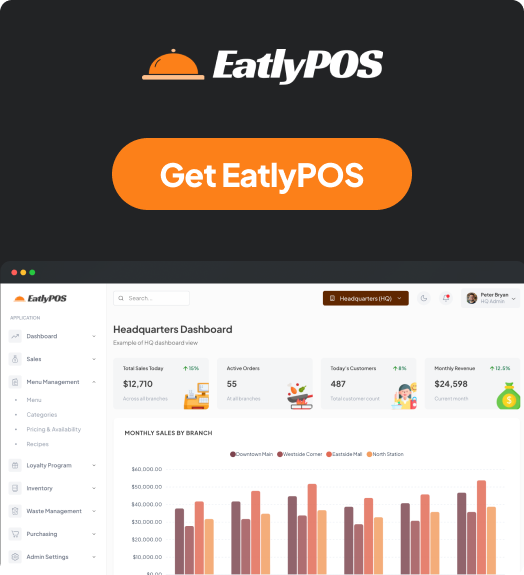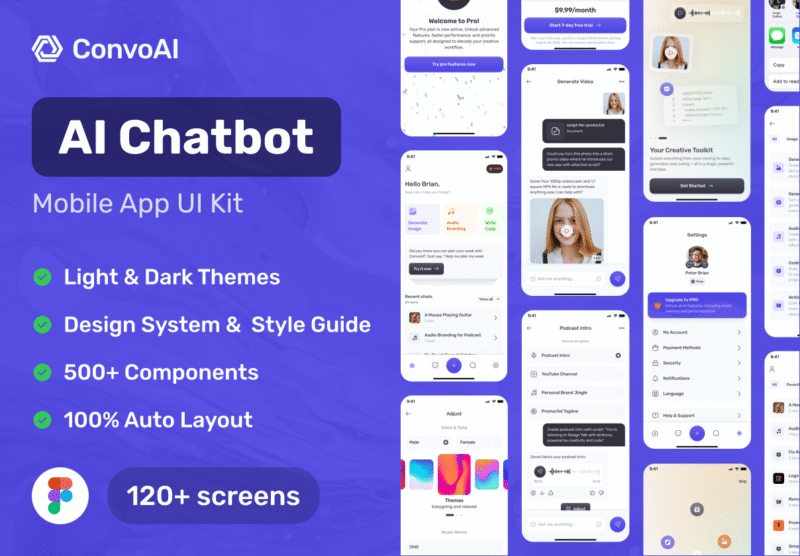Restaurant Management System is a software that help manage specific aspects of a restaurant business. Modules inside this software often work together to form a comprehensive and efficient system. Key modules typically include:
- Point of Sale (POS) System: Handles order taking, payment processing, and sales tracking. This is often the central hub of a restaurant management system.
- Kitchen Display System (KDS): Displays orders to kitchen staff, helping to streamline food preparation and order fulfillment.
- Inventory Management: Tracks stock levels of ingredients and supplies, manages suppliers, and provides alerts for low inventory.
- Menu Management: Allows for creation, updating, and pricing of menu items, including managing item availability.
- Customer Relationship Management (CRM) / Loyalty Program: Manages customer information, tracks preferences, and facilitates loyalty programs with points, rewards, and personalized offers.
- Staff Management: Assigns staff to specific roles and branches, manages schedules, and tracks performance.
- Reporting and Analytics: Provides detailed insights into sales, inventory, staff performance, and other key metrics through various reports and dashboards.
- Waste Management: Helps track and reduce food waste through intelligent monitoring and usage analytics.
- Multi-Branch Management: Enables management of multiple restaurant locations from a single platform, including centralized dashboards, individual branch views, and staff assignment across branches.
Benefits of Modular Restaurant Management Systems
Modular systems offer several advantages:
- Time Saving: Automating tasks like order taking and inventory tracking frees up staff time, allowing them to focus on customer service.
- Flexibility: Businesses can choose and implement only the modules relevant to their specific operations and budget, making the system highly customizable.
- Automation: Repetitive and mundane tasks can be automated, reducing human error and improving efficiency.
Operations and Roles in Restaurant Management Systems
Effective restaurant management involves various operations and roles, especially in multi-branch scenarios. A robust RMS facilitates these by providing centralized control and streamlined workflows.
Key Operations:
- Order Management: From taking orders (dine-in, takeout, delivery) to sending them to the kitchen and managing modifications or cancellations.
- Inventory Control: Tracking ingredients, managing recipes, minimizing waste, and automating reorder processes.
- Staff Management: Scheduling, time tracking, payroll integration, and performance monitoring.
- Customer Management: Building customer profiles, managing loyalty programs, and gathering feedback.
- Financial Reporting: Generating sales reports, profit and loss statements, and managing expenses.
- Menu Updates: Easily adding, removing, or modifying menu items and prices across all locations.
Key Roles:
- Restaurant Manager: Oversees daily operations, staff, and customer satisfaction at a single branch.
- Multi-Unit Manager/Area Manager: Manages operations across multiple locations, ensuring consistency in brand, service, and operational procedures. They often handle training, goal setting, and financial results for their assigned units.
- Headquarters/Admin Staff: Manages the overall system, including centralized reporting, system configuration, user permissions, and business preferences for all branches.
- Kitchen Staff: Utilizes KDS for efficient food preparation and order fulfillment.
- Front-of-House Staff (Servers, Cashiers): Uses POS for order taking, payment processing, and customer interaction.
Multi-Branch Scenarios:
Managing multiple restaurant locations presents unique challenges that a comprehensive RMS can address:
- Centralized Control: A single platform to oversee all branches, providing a bird’s-eye view of performance metrics, sales, and inventory across the entire chain.
- Consistency: Ensuring consistent branding, menu, pricing, and operational procedures across all locations. This is crucial for maintaining customer experience and brand integrity.
- Data Aggregation: Consolidating data from all branches for comprehensive reporting and analysis, enabling better decision-making and identification of trends.
- Scalability: Easily adding new branches and integrating them into the existing system without significant operational overhead.
- Staff Management Across Branches: Assigning staff to specific branches with role-based permissions and managing their schedules and performance centrally.
Revolutionizing Restaurant Management: A Deep Dive into Next.js Templates and EatlyPOS
In today’s fast-paced culinary world, efficient restaurant management is paramount to success. From bustling multi-branch chains to cozy single-location eateries, the need for robust, integrated systems has never been greater. This blog post will explore the essential components of a modern restaurant management system (RMS), delve into key operations and roles, and examine the complexities of multi-branch scenarios. We will then conduct a detailed review of EatlyPOS, a Next.js restaurant management system template, highlighting how it addresses real-world business challenges and offers significant advantages for developers and agencies.
EatlyPOS: A Next.js Template Built for Real-World Restaurant Scenarios
EatlyPOS stands out as a Next.js restaurant management system template designed with practical business cases in mind. It offers a comprehensive suite of features that cater to the diverse needs of modern restaurants, from single establishments to multi-branch enterprises. Its architecture and functionalities directly address the operational challenges discussed earlier, providing a solid foundation for building sophisticated RMS solutions.
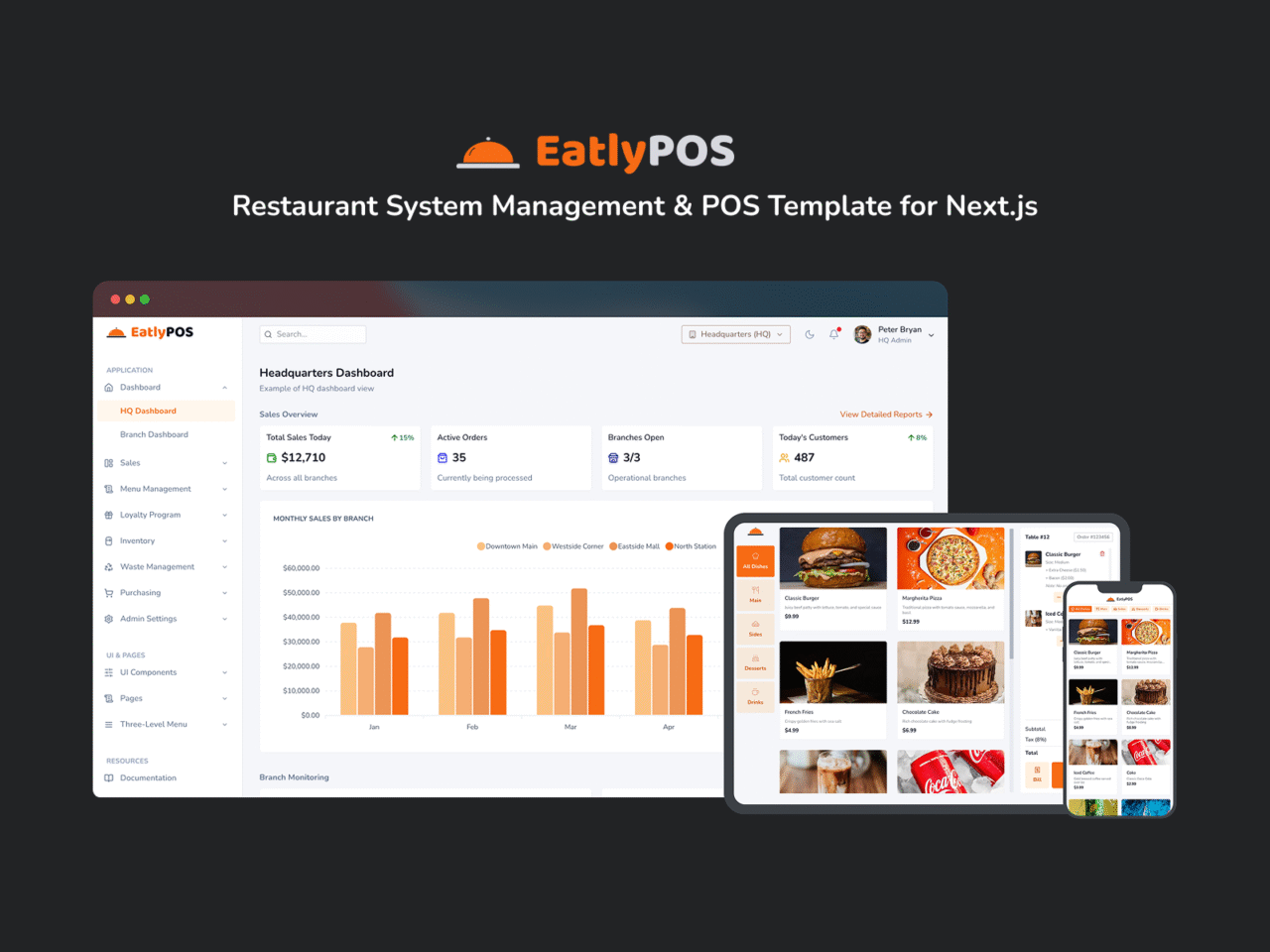
Key Features and Real-World Application
Multi-Branch Management
EatlyPOS natively supports multi-branch architecture, allowing users to manage all restaurant locations from a single platform. This includes a centralized HQ Dashboard for a bird’s-eye view of all branches with performance metrics and comparison charts, as well as the ability to drill down into individual branch operations, inventory, and sales. This directly addresses the need for consistency and centralized control in multi-unit operations.
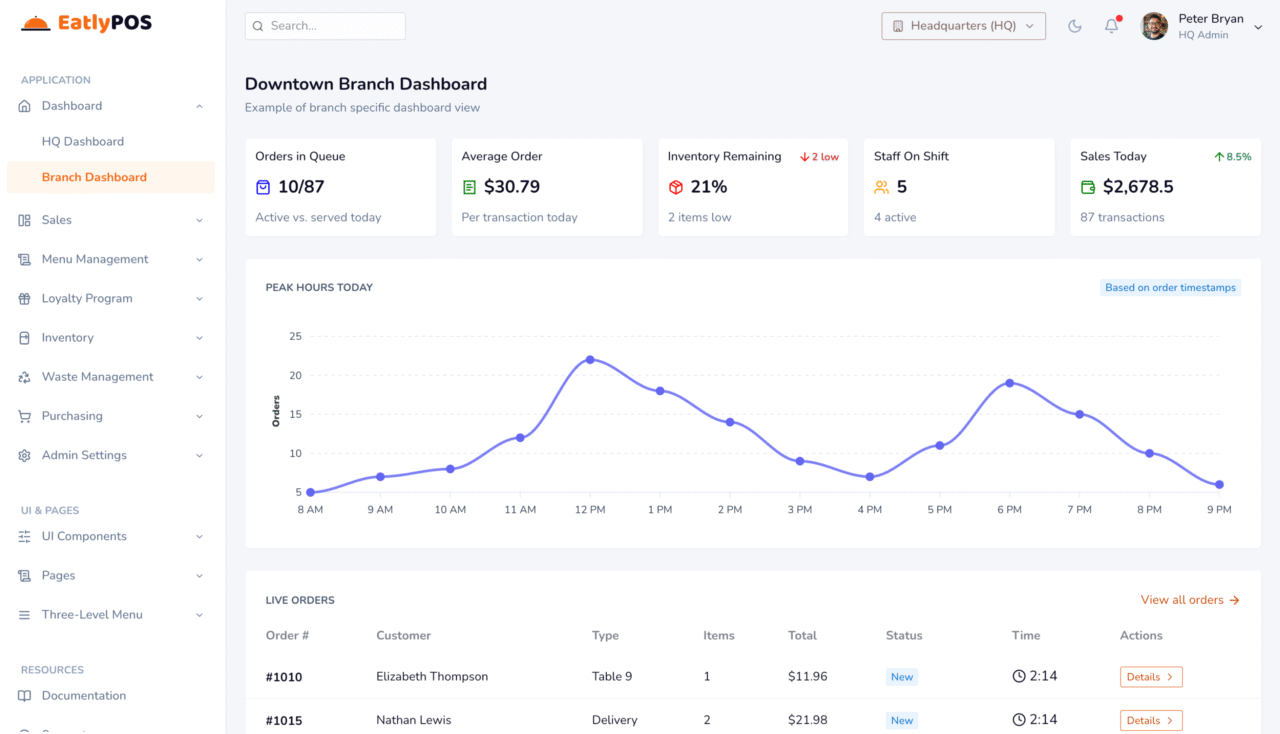
Comprehensive POS System
The template includes a complete POS system for fast order taking, checkout processes, mobile ordering, and a kitchen display system. This streamlines front-of-house and back-of-house operations, reducing manual errors and improving service speed.
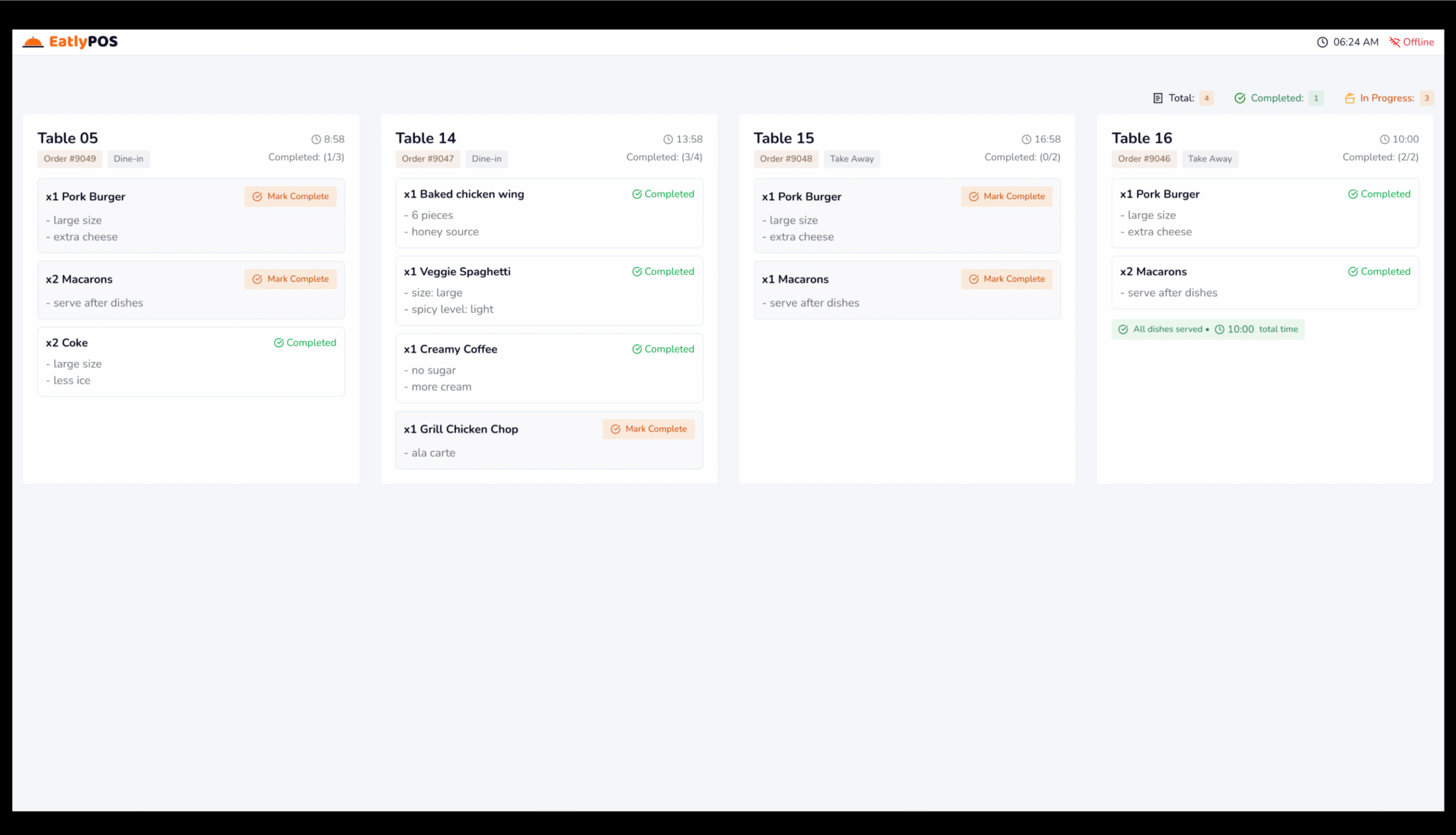
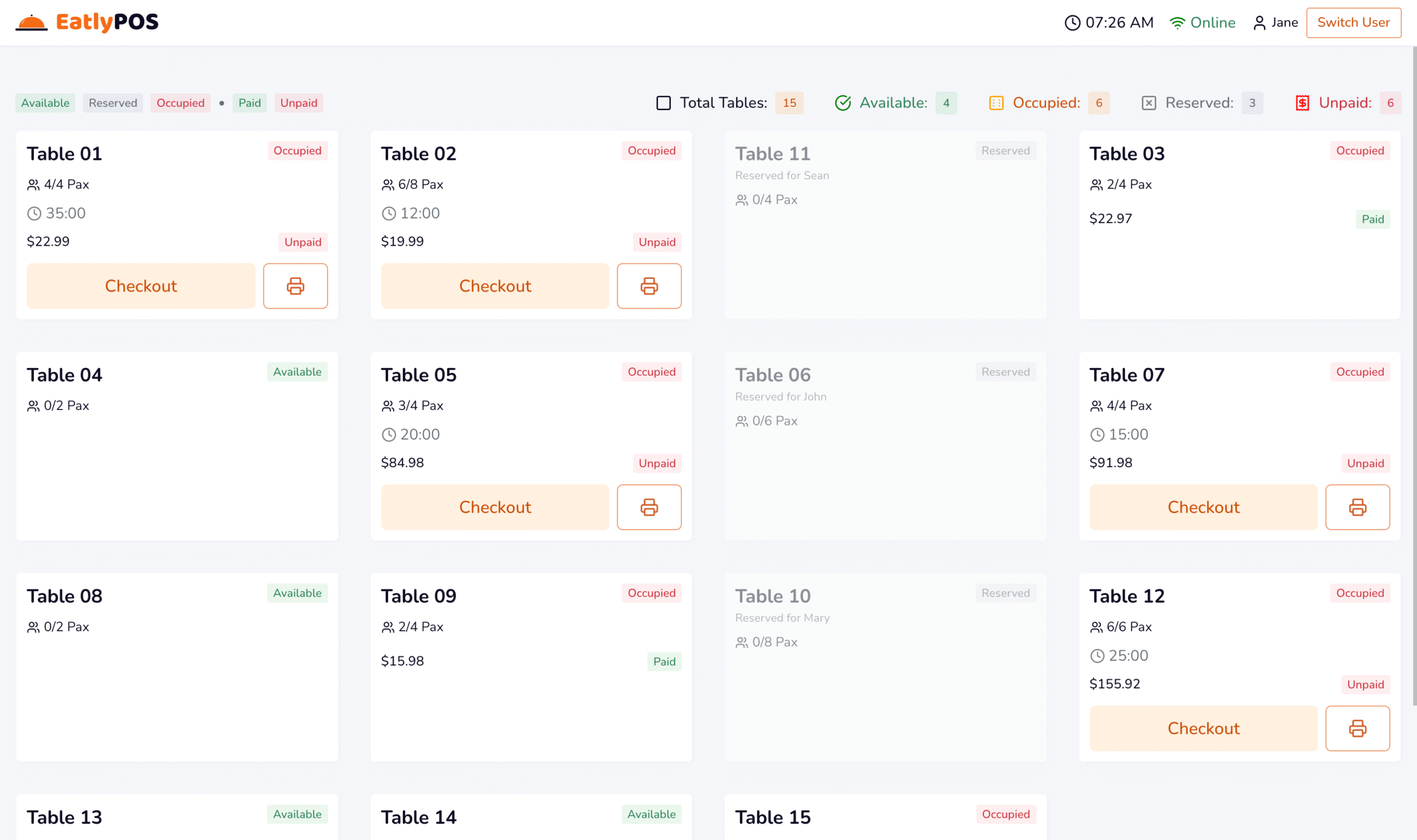

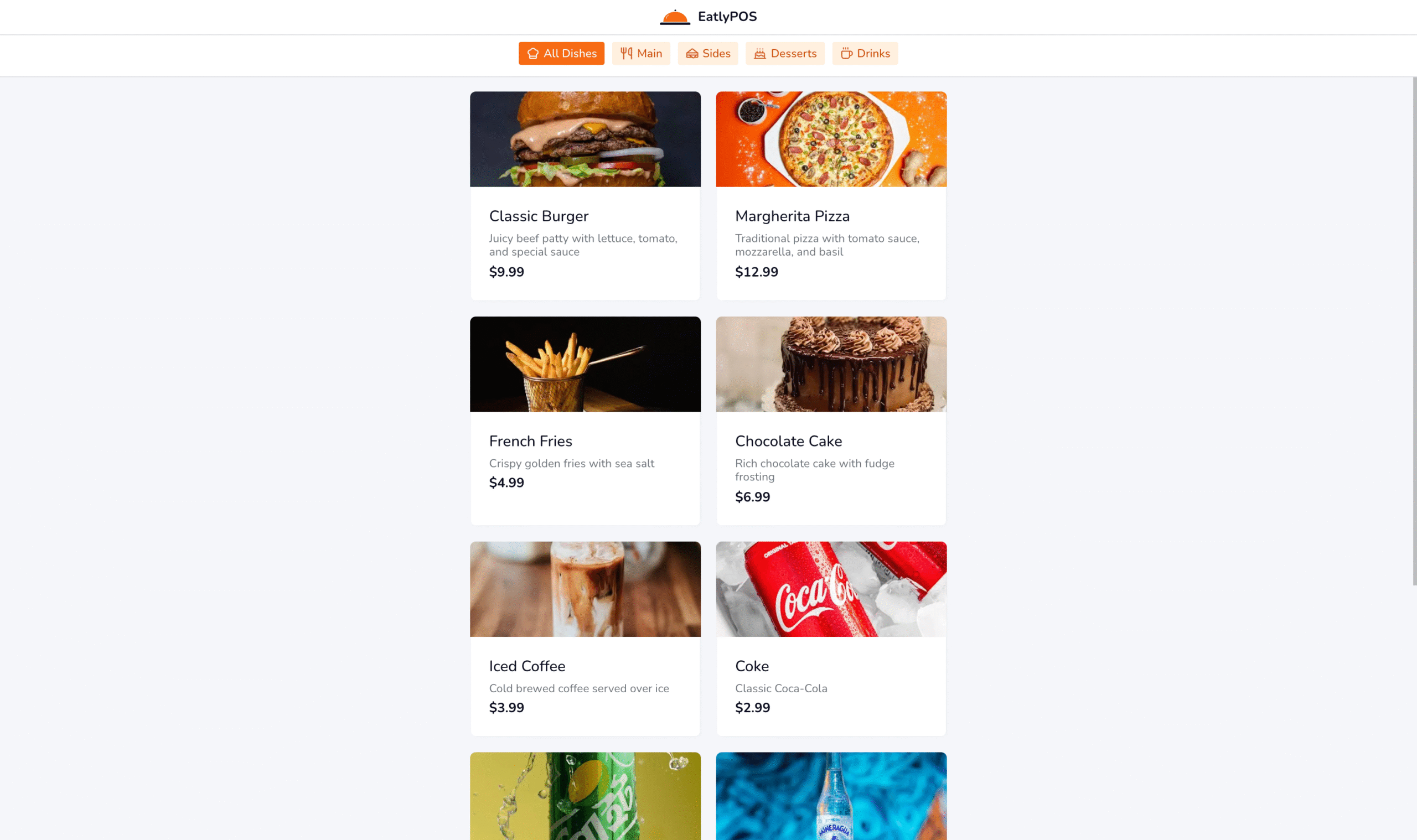
Inventory and Waste Management
EatlyPOS provides robust inventory management features to track stock levels, receive low inventory alerts, and manage suppliers. Furthermore, its waste management capabilities help track and reduce food waste through intelligent inventory monitoring and usage analytics, directly impacting profitability.
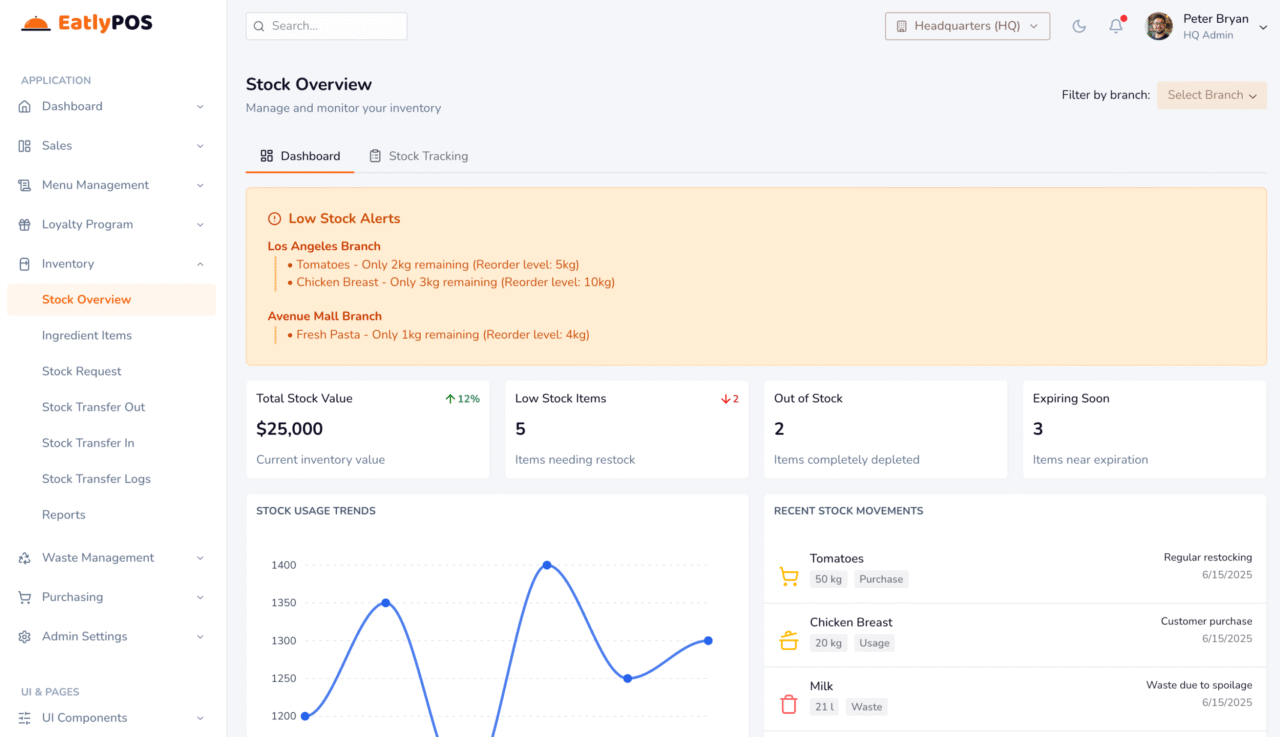
Menu Management
The system allows for easy creation and updating of menus, management of item availability, and setting of pricing, crucial for adapting to changing customer preferences and market demands.
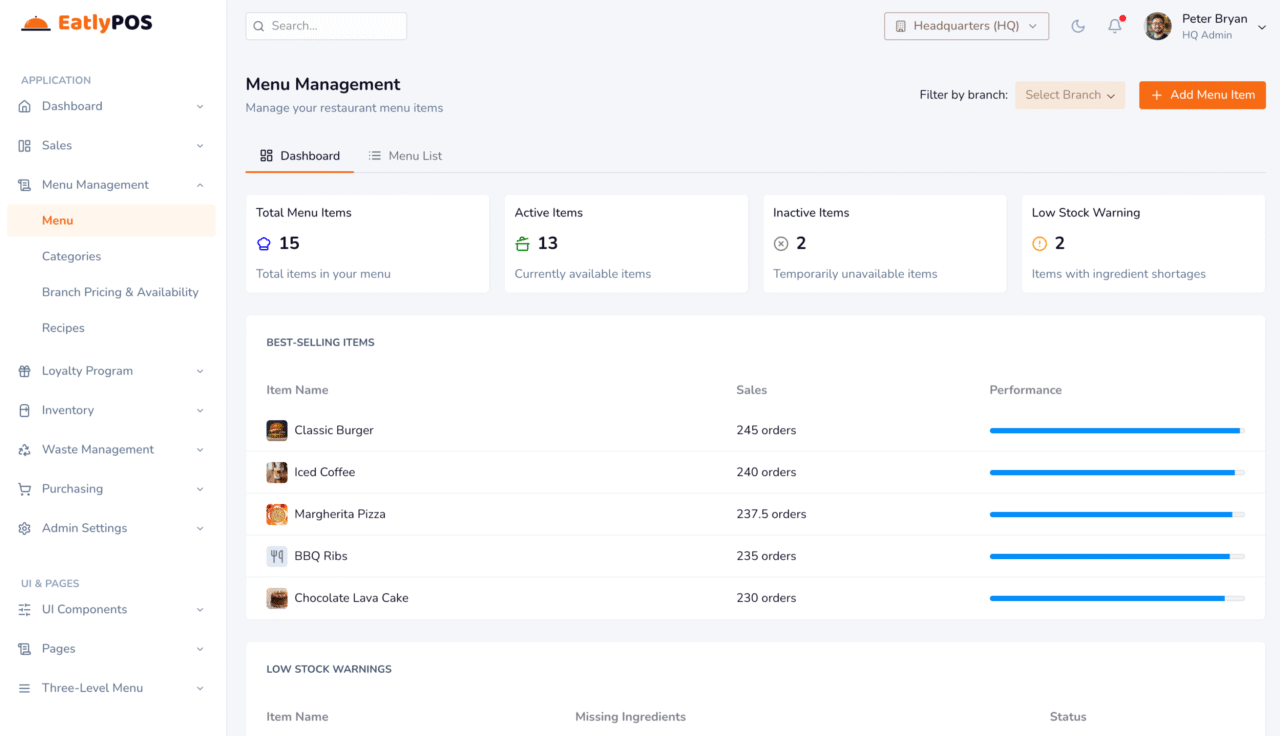
Customer Loyalty Program
Building customer relationships is vital, and EatlyPOS facilitates this with a customer loyalty program that supports points, rewards, and personalized offers. This helps in retaining customers and driving repeat business.
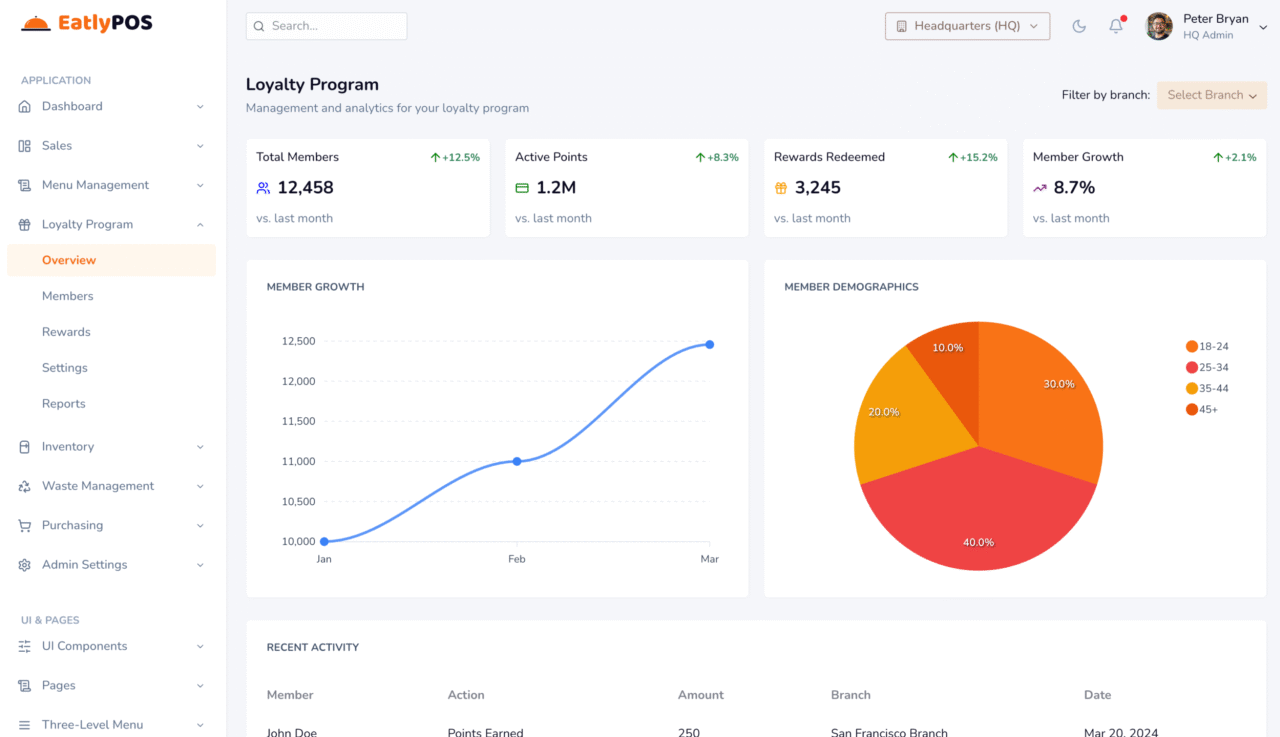
Advanced Reporting
Access to detailed reports on sales, inventory, staff performance, and more enables data-driven decision-making, a critical aspect of effective restaurant management.
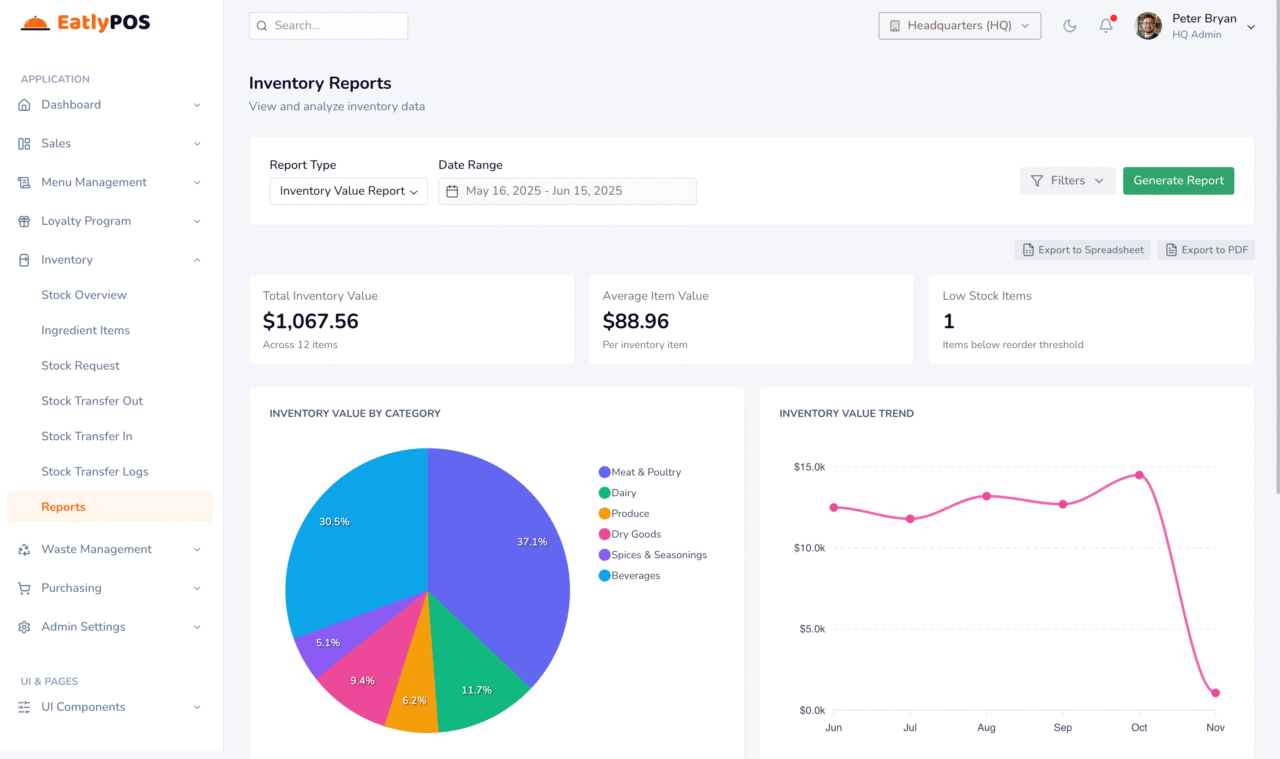
Staff Management
The ability to assign staff to specific branches with role-based permissions ensures efficient workforce management and security.
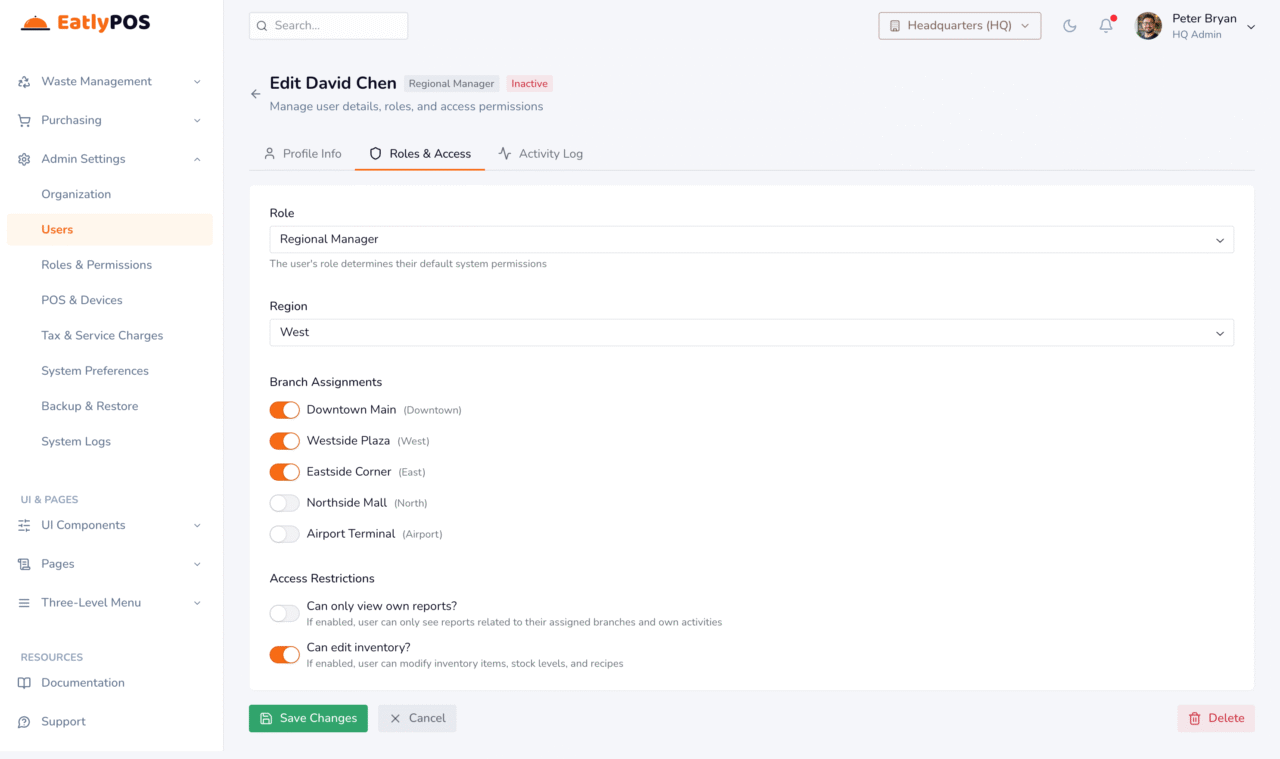
Benefits for Developers and Agencies:
EatlyPOS is not just a functional system; it’s also built with developers and agencies in mind, offering significant advantages for those looking to build or customize restaurant management solutions.
- Modern Tech Stack: Built with the latest Next.js (15+), Radix UI, Tailwind CSS, and full TypeScript integration, EatlyPOS provides a modern, performant, and type-safe development environment. This allows developers to leverage cutting-edge technologies and build scalable applications.
- Accelerated Development: The template’s feature-rich foundation and well-structured, modular code significantly reduce development time. Developers can skip months of foundational work and focus on customization and adding unique features, accelerating time-to-market for client projects.
- Easy Customization and Extension: The modular architecture and clean codebase make it easy to modify and extend the system to meet specific client requirements. This flexibility is invaluable for agencies building bespoke solutions.
- Responsive Design: The template is designed to work seamlessly on all devices, from desktop to mobile, ensuring a consistent user experience across various platforms.
- Licensing Model:
- Regular License: Ideal for individual developers working on a single client project. It provides full source code access, multi-branch use, lifetime updates, and 6 months of support, enabling them to deliver a complete solution to their clients.
- Extended License: Tailored for agencies and developers who intend to develop the template further into a complete product (SaaS) and sell or sublicense it to multiple business entities. This license offers lifetime support and the right to incorporate the template into an end product for commercial distribution, providing a clear pathway for productization and broader market reach.
In conclusion, EatlyPOS offers a robust, flexible, and developer-friendly foundation for building next-generation restaurant management systems. Its comprehensive features, coupled with a modern tech stack and a thoughtful licensing model, make it an excellent choice for anyone looking to accelerate their development process and deliver high-quality solutions to the restaurant industry.
